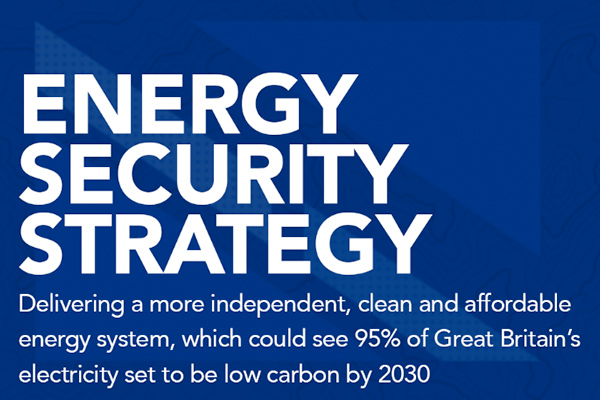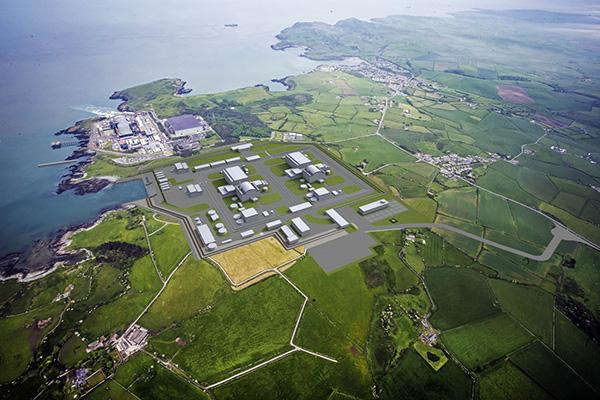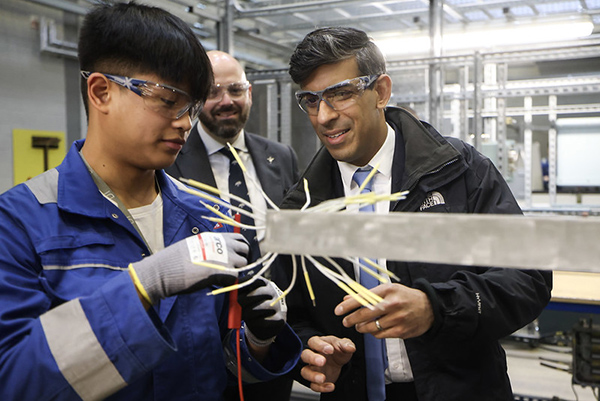The UK government has set an ambition of 24GW of nuclear capacity by 2050 as part of its new energy security strategy.
The new target represents up to 25 per cent of the UK’s projected electricity demand. The government says it will progress up to eight projects as soon as possible this decade, including Sizewell C in Suffolk and at Wylfa in Anglesey.
As well as gigawatt-scale reactors such as the Framatome EPRs currently under construction at Hinkley Point C, the project pipeline will also include small modular reactors (SMRs), subject to technology readiness from industry. The government aims to progress at least one project (most likely Sizewell C) to final investment decision (FID) by the end of this Parliament, and two (including an SMR project) in the next Parliament.
Andrew Storer, CEO of the Nuclear AMRC comments: “The new strategy’s targets for building new nuclear capacity are a welcome step in the right direction, and should help get the UK new build programme back on track. This week’s updated report from the IPCC emphasised the urgent need to decarbonise our energy system by deploying a host of technologies, and it’s increasingly clear that nuclear has to play a significant part in the energy mix over the coming decades. Recent crises in the energy market have also highlighted the importance of moving away from imported fossil fuels towards secure, sustainable and affordable alternatives.
“The nuclear new build programme has struggled to get moving over the past decade, and the fact that the previous generation of AGR power stations are now ceasing operation means that we’re now losing reliable low-carbon generation capacity just when we need it most. The barriers to new build haven’t been technological – they’ve come from the costs and risks of securing upfront financing for these multi-billion pound long-term infrastructure projects. The RAB financing model, which has now passed into UK law, a financial commitment from government, and the introduction of more easily financed small modular reactors should remove some of the blockers and make nuclear a much more attractive place for institutional investors.
“Nuclear remains the only source of proven, reliable low-carbon power generation which operates around the clock, whatever the weather. The new target of 24GW by 2050, up to 25 per cent of total generation, should be a minimum baseline – we can go further with nuclear to provide a truly sustainable and secure energy mix. Modelling by the Energy Systems Catapult has shown that the optimal pathway to net-zero includes up to 50 per cent of nuclear by 2050 – that’s potentially up to 40GW of capacity.
“An intensive nuclear build programme will stretch the capabilities and capacity of the UK supply chain, but industry is ready to step up. We’ve already worked with hundreds of UK manufacturers to help them prepare for the opportunities and meet the needs of nuclear projects, and we’re working with Rolls-Royce SMR and other developers to make sure that new reactor technologies can be manufactured in the most cost-effective way with as much UK content as possible.
“New nuclear power can bring the biggest economic benefits to the UK of any energy technology. And those benefits will be felt nationwide – around 90 per cent of jobs in the industry are based outside London and the South East, and the average value of jobs in nuclear is around twice the national average.”

A new government body, Great British Nuclear, will be set up to bring forward new projects, backed by unspecified but “substantial” funding. The government also confirmed plans to launch the £120 million Future Nuclear Enabling Fund in April.
In parallel with the strategy release, reactor operator EDF has announced plans to extend the life of its Sizewell B power station by at least 20 years, which will allow the 1.2GW plant to contribute to the 2050 target.
The British energy security strategy also outlines plans to accelerate the deployment of wind, solar and hydrogen, while supporting the continuing production of domestic oil and gas. The proposals could see 95 per cent of UK electricity generation being low carbon by 2030.






